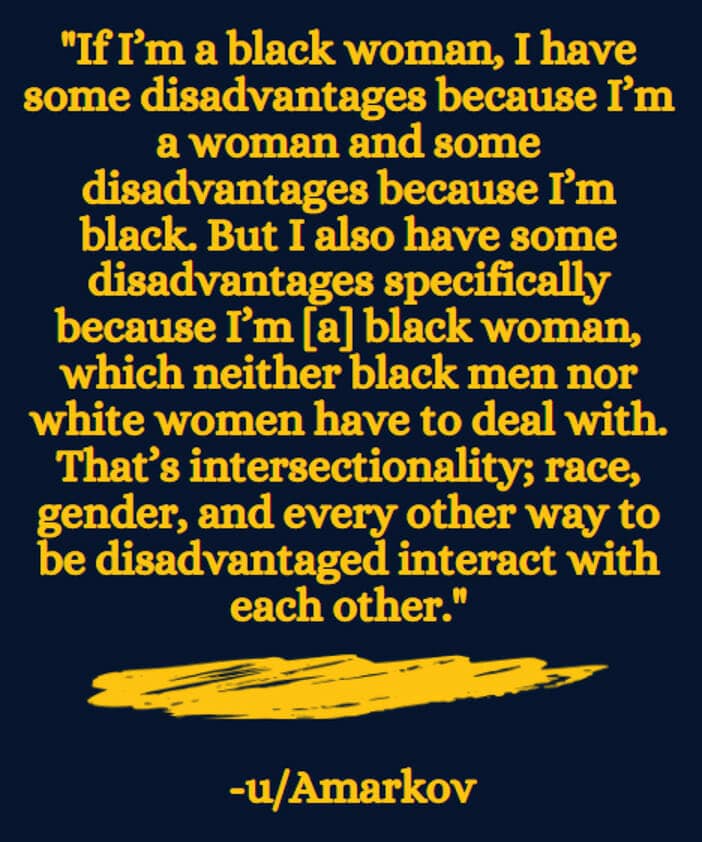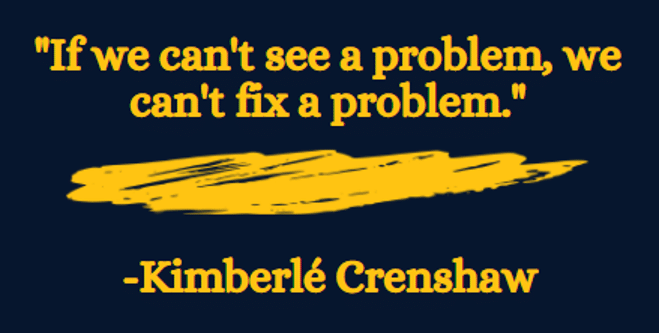The Intersectionality of Diversity

For many organizations, diversity is treated as a box to check. Is this employee diverse – YES or NO? However, diversity is more complicated that that and often times exists in layers. It is not all-or-nothing, but rather, different types of diversity (gender, race, sexual orientation, etc.) build, layer, and intersect with each other. This idea is known as intersectionality.
While diversity and inclusion initiatives exist in most modern workplaces, those programs often fail to recognize the ways an individual may experience inequity and discrimination from various identities. Most Diversity, Equity & Inclusion (“DE&I”) initiatives think of individuals from a singular oppression lens without considering the multiple sources of discrimination an individual may be experiencing.
For our DE&I efforts to truly have an impact in the workplace, we must have a better understanding of (and consequently application) of the concept of intersectionality.
The term was coined in 1989 by Kimberlé Crenshaw, a professor of law at Columbia University and UCLA. Crenshaw grew tired of anti-racism movements that centered on Black men and Feminist movements that centered on white women. Black women are adversely impacted by both racism and sexism, yet neither social justice movement caters directly to their unique needs and experiences at work. Since its inception, the concept has been expanded to highlight other cross-roads including ableness, sexuality, social class, citizenship status, religion, etc.
In practice, intersectionality considers the different systems within which oppression exists, and how those systems overlap to compound oppression in unique ways.
If I’m a black woman, I have some disadvantages because I’m a woman and some disadvantages because I’m black. But I also have some disadvantages specifically because I’m [a] black woman, which neither black men nor white women have to deal with. That’s intersectionality; race, gender, and every other way to be disadvantaged interact with each other – (U/Amarkov)

It’s important to consider how multiple identities intersect – as focusing on simply one identity masks the deeper and more complex systemic issues, further compounding inequality.
If we can’t see a problem, we can’t fix a problem –Kimberlé Crenshaw

For example, the gender pay gap is often discussed – with women making $0.75 on the dollar compared to their male counterparts. However, the gap is far more pronounced when race and ethnicity are also considered, in addition to gender. Black women earn $0.63, Latina women earn $0.54, and Native American women $0.57 on the dollar compared to their White male counterparts for the same position. Further, while the wage gap between women and men in the workplace has remained steady, the wage gap between white women and Black women has continued to increase and, according to the Economic Policy Institute, is the fastest growing wage gap disparity in the country.
Shifting focus toward those that experience this intersection between their various, diverse identities does not take away from those who experience their diversity in a more singular form. If DE&I efforts are focused on ensuring that the most marginalized (i.e., those holding multiple marginalized identities) are supported, the moderately marginalized (i.e., those most often highlighted in traditional DE&I programs) will benefit as well.
So what does it look like to value intersectionality within the workplace?
- First, review your current employee data. Consider, with your current methods of tracking, what groups or collections of identities are being left out. Your data should paint an accurate picture of your company workforce, in particular your leadership team. Run metrics across a multitude of demographic factors (not just by race or by gender) to gain a more accurate representation of your workforce.
- Address any barriers resulting from intersectionality in the workplace. For your affinity support groups, ensure that they cater to their members holding unique identities. Often these sorts of support groups focus on the majority presentation within the group potentially further marginalizing select members. For example, having an affinity group catering to women with all white leaders, or a group for African American members of the workforce with all male leaders.
- Initiate change with your leadership. There needs to be buy-in from leadership as evidenced by their actions and willingness to make policy changes. Additionally, leadership should actively seek to diversify their members and, at the very least, invite diverse voices into the decision-making room to ensure a multitude of perspectives are considered.
- Provide opportunities for continued learning and awareness. Building a more inclusive workplace will take a commitment to confronting individual and corporate blind spots, learning, and retraining. While the one-off training on microaggressions is helpful, shifting culture in the workplace requires a consistent feedback loop of questioning current practices and making changes where necessary.
- Also consider the following resources as a starting point for individual learning:
- Invest your time and resources into making lasting changes. Commit to investing time and resources, not remnants, to build a truly inclusive workplace. Create inclusive policies to support the push towards a more inclusive workplace. In addition to policy creation, revisiting these policies and how they server or miss multiple intersecting identities will be key to retaining a truly inclusive workplace.
Considering intersectionality within your DE&I work is not an easy task, but it is a necessary and meaningful task to vehemently combat inequality within the workplace.
Author: Niwa Babayemi
References:
The urgency of intersectionality | Kimberlé Crenshaw – YouTube
Intersectionality at work: Why focusing on women isn’t enough | Culture Amp
